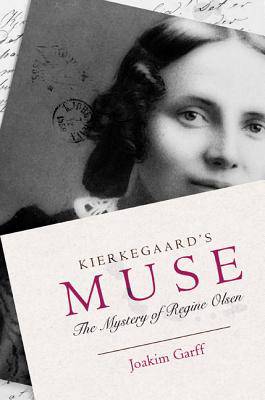
In this book, Joakim Garff, author of Søren Kierkegaard: A Biography, and director of the Søren Kierkegaard Research Centre at the University of Copenhagen, evokes part of the life of Regine Olsen (1822-1904), Søren’s fiancée in real life (1840-1841), and his unattainable muse in fiction. From the point of view of a Kierkegaard reader this biography is disappointing. Garff did not discover anything not already known about their relationship. This includes the highly advertised ‘secret meetings’ after August 1841. They form part of Kierkegaard’s own mythography. Those meetings were no real meetings. Both protagonists were often at the same time at the same place, passing each other without uttering a word. In his famous imaginative style, Kierkegaard attributes meaning to the smallest detail in them. What Regine thought? Or if she even noticed? We don’t know. Or better: we do know, because Regine outlived Kierkegaard for half a century, and was often interviewed about it. There was nothing else than a sense of pity, and an elusive feeling of guilt on her side.
Why then this biography of Regine Olson? Well, in 1995 Garff gained access to Regine’s letters to her sister Cornelia (written after Kierkegaards death, between 1855 to 1860). At that time Regine’s husband, Fritz Schlegel (married to Regine in 1847), was governor of the Danish West Indies. These letters provide rich insight into colonial life, but they contain nothing (!) in terms of Regine’s thoughts about her fiancé. She does not even refer to Kierkegaard directly in these letters, despite the fact that she was fully informed about Kierkegaards death and even read his posthumous papers (all sent to her by Kierkegaard’s nephew Henrik Lund). This silence is telling. I presume Garff must have been disappointed by this outcome. So, in this book, he speculates that Kierkegaard did still exert an influence on Regine (argumentatio ex nihilo), but that is exactly what it is: speculation. The blurbs on the backcover book are sheer publisher’s propaganda.
IN SHORT: Anyone interested in letters from a 19th century Danish woman, living the colonies, addressed to her sister, should read this book. He or she will probably be annoyed by the elements of Kierkegaard’s biography that precede the summary and quotations from Regine’s correspondence. A Kierkegaard-reader should simply leave this book aside.
Dick Wursten
Joakim Garff, Kierkegaard’s Muse: The Mystery of Regine Olsen. Translated by Alastair Hannay. 313 p. Princeton University Press, 2017. ISBN 9780691171760